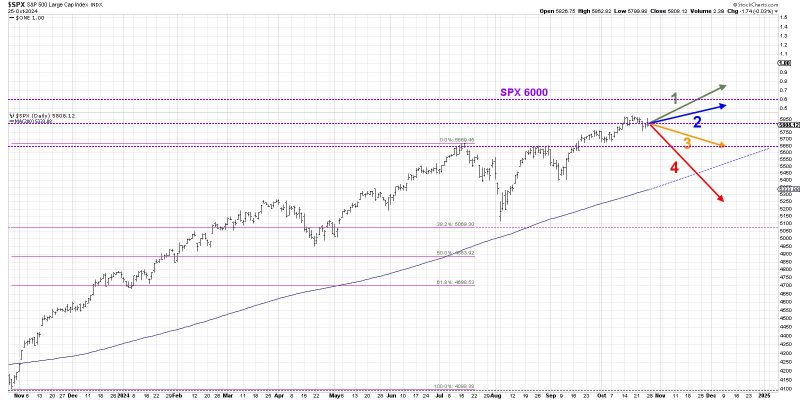The S&P 500 index, considered to be a barometer of the US stock market and a key indicator of the overall economic health, has been on a bullish trajectory in recent times. Many investors and analysts have been speculating about whether the index will reach the 6000 mark anytime soon. However, there are several reasons why the S&P 500 may not break the 6000 level just yet.
Firstly, the current economic conditions are uncertain and volatile. The ongoing trade tensions between the US and China, geopolitical uncertainties, and the unpredictability of global events all pose significant risks to the market. These uncertainties can lead to market fluctuations and hinder the S&P 500 from reaching new highs.
Secondly, while the US economy has shown signs of recovery, there are underlying challenges that could limit the index’s growth. The Federal Reserve’s monetary policy decisions, inflation rates, and employment data can all influence investor sentiments and impact the performance of the S&P 500.
Moreover, the valuation of the S&P 500 companies plays a crucial role in determining the index’s future trajectory. Elevated stock prices, high price-to-earnings ratios, and overvaluation of certain sectors could prevent the index from breaking the 6000 level in the near future. Investors may become cautious and hesitant to push the index higher if they perceive the market to be overpriced.
Additionally, the impact of technological disruptions and regulatory changes cannot be overlooked. The rise of disruptive technologies, such as artificial intelligence and blockchain, has transformed various industries and reshaped market dynamics. Regulatory scrutiny and changes in government policies can also affect investor confidence and hinder the growth of the S&P 500.
Furthermore, global economic conditions and events have a significant influence on the performance of the S&P 500. Trade agreements, economic growth rates in key markets, and international developments can all impact the index’s performance. Any adverse global events or economic downturns can hamper the index’s upward trajectory and delay its move towards the 6000 level.
In conclusion, while the S&P 500 has shown resilience and strength in recent times, achieving the 6000 level may not happen in the immediate future due to the uncertainties and challenges present in the market. Investors should closely monitor economic indicators, global events, and company valuations to navigate the market effectively and make informed investment decisions.
